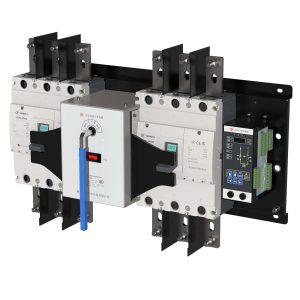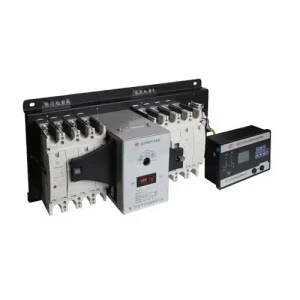In today’s modern society that is highly dependent on electricity, Automatic Transfer Switch (ATS) is a key technology to ensure continuous power supply for key equipment and systems. When the main power fails, ATS can rapidly turn to backup power, therefore preventing the major repercussions of power outages. The load management strategy, maintenance and troubleshooting techniques of ATS, together with safety issues in design and use, will be discussed in this paper.

Automatic Transfer Switch UEQ5 series
The Automatic Transfer Switch Load Management Strategy
A key link in ATS architecture, the load management strategy controls ATS response to various loads. First, according to the priority and characteristics of the load, ATS can preset different switching strategies. For critical loads such as hospital operating rooms and data centers, an instant switching strategy should be configured to ensure seamless power supply. Delayed switching or rotating power supply techniques can be programmed to maximize the utilization of power resources for non-critical loads including office areas and lighting systems.
Secondly, load management depends much on intelligent monitoring systems. By monitoring the operating status and power supply of the load in real time, the intelligent monitoring system can provide accurate data support for the ATS and help the ATS make more reasonable switching decisions. Furthermore, the ATS’s load management approach may accomplish remote control and automatic adjustment in line with the advancement of Internet of Things technologies.
Maintenance and troubleshooting of automatic transfer switch electrical appliances
The foundation of guaranteeing the long-term steady operation of the ATS is regular maintenance. Maintenance work includes inspection, cleaning and testing of all components of the ATS to prevent potential failures. Specifically, one should check the wear of the contactor, tighten all connectors, test whether the controller runs normally, and see whether the sensor can faithfully sense the power state.
Finding the problem fast and precisely is the secret to troubleshooting when the ATS fails. Typical flaws are sensor false alarm, controller failure, contactor stickiness, etc. Corresponding actions can be done for these flaws including changing faulty contactors, recalibrating sensors, and updating controller software. Furthermore, implementing a consistent troubleshooting procedure will assist to increase fault handling efficiency.
Safety considerations for automatic transfer switch electrical appliances
Design and application of ATS give first thought to safety. ATS must to follow electrical safety guidelines and contain leakage protection, short circuit protection, and overload protection. Install ATS such that its position is convenient for operation and maintenance and that possible electrical accident hazards are avoided. Operators should receive professional training to understand the correct operation methods and safety procedures of ATS.
In addition, the housing design of ATS should have sufficient protection level to resist the invasion of external environmental factors. Designing ATS should take equipment heat dissipation needs into account as well to guarantee equipment stability in long-term operation. Adopting sophisticated materials and production techniques helps to further increase the dependability and safety of ATS.

Automatic Transfer Switch
As a key component in the power system, the load management strategy, maintenance and troubleshooting methods, and safety considerations of automatic transfer switch electrical appliances are crucial to ensure the continuity and reliability of power supply. With the development of technology and the growth of power demand, the role of ATS will become more important. Deeply knowing the working principle and operation requirements of ATS will help us to use this technology more wisely to guarantee the power supply of important loads and so enhance the stability and safety of the whole power system. With the further integration of smart grids and renewable energy, the future development of ATS will pay more attention to intelligence, integration, and harmonious coexistence with the environment.
Post time: 7 月-09-2024


